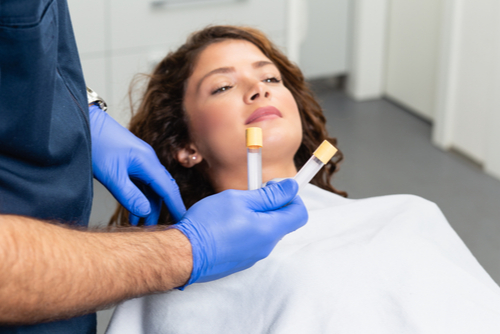
PRP hair restoration is considered among the most effective non-surgical hair restoration techniques. Though, a less common, but especially lucrative use of PRP hair injections is after hair transplant surgery. Let’s take a closer look at some of the benefits of PRP hair restoration after hair transplant surgery.
Immediately after a hair transplant, it will take some number of weeks or months to see new hair growth. Final results can take a year in some cases. However, studies have shown that if patients undergo platelet rich plasma injections after their surgery, they often see faster, thicker, and better hair growth following hair transplant surgery.
It can also prevent and slow any future hair loss that could occur. While patients usually do not see widespread hair loss following hair transplant, it can happen and even just yearly treatments of PRP hair restoration can help men and women keep their transplanted longer and healthier.
To learn more about the benefits of PRP hair restoration injections, schedule a consultation by calling 206-279-2112. You can also reach out online using chat or contact form.











